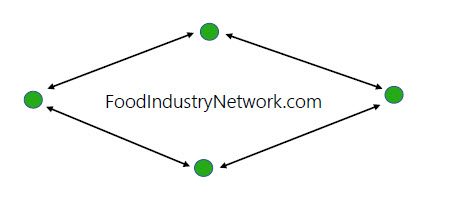Bank of Canada holds rates, says tariffs could cause deep recession
Ottawa | Reuters—The Bank of Canada on Wednesday held its key policy rate at 2.75 per cent, its first pause after seven consecutive cuts, and said that the uncertainty around U.S. tariffs made it impossible to issue regular economic forecasts.
Instead, the central bank produced two scenarios on what could happen, including one which predicted a deep recession in Canada and a spike in inflation.
Governor Tiff Macklem said the bank – which began cutting last June – had kept rates on hold as it gained more information on the impact of tariffs and would proceed carefully.
Read Also


How bird flu differs from seasonal flu − an infectious disease researcher explains
The viruses that cause seasonal flu and bird flu are distinct but still closely related. Understanding their similarities and differences can help people protect themselves and their loved ones.
For the latest tariff news and analysis, visit the Western Producer’s tariff page.
“That means being less forward looking than usual until the situation is clearer,” he said in his opening remarks after the rates decision was announced.
“It also means we are prepared to act decisively if incoming information points clearly in one direction,” he said. The bank’s monetary policy would ensure that inflation remained under control and would support economic growth, he added.
Possibility of more aggressive approach still open
Economists construed the governor’s commentary as an indication that the bank’s current pause was not an end to the easing cycle and it would jump in to support the economy if needed.
“He’s clearly laid open the possibility of getting a lot more aggressive if the economy deteriorates substantially,” said Doug Porter, chief economist at BMO Capital Markets.
Andrew Kelvin, head of Canadian and global rates strategy, TD Securities, said that going forward the weakness is expected to pile up in the economy and that would force the bank to cut rates again.
Currency swap markets are betting on 54 per cent odds of another pause on June 6, when the bank announces its next monetary policy decision.
The Canadian dollar extended gains after the policy decision and was trading firmer by 0.51 per cent to 1.3884 against the U.S. dollar, or 72.03 U.S. cents. Yields on the two-year government bonds were up 0.9 basis points to 2.541 per cent.
GDP expectations
In the near term, the BoC expects second-quarter GDP to be much weaker, after a 1.8 per cent growth forecast for first quarter. Inflation is seen dipping to about 1.5 per cent in April, mainly due to the removal of carbon taxes and lower crude prices.
The bank said it was difficult to predict the path of the economy for the long term.
“Forecasts for economic growth are of little use as a guide to anything,” Macklem said.
For the first time since the pandemic the BoC scrapped the economic forecasts it gives in a quarterly monetary policy report. It instead offered two possible scenarios.
The first assumes that most of the tariffs are eventually withdrawn through negotiations, which would stall GDP in the second quarter. The economy then expands moderately, while inflation sinks to 1.5 per cent before returning to the two per cent target.
In the second scenario, the bank assumes the tariffs spark a long-lasting global trade war. In this case, the Canadian economy goes into a significant recession for a year while inflation spikes to 3.5 per cent in mid-2026.
Macklem said that under this scenario, the U.S. tariffs would permanently reduce Canada’s potential output and lower the country’s standard of living.
“To be clear, these are only two of many possible scenarios, and even these do not span the possible outcomes,” he said.
Canada’s economy, which had been teetering for most of last year, found its footing as 2024 was ending.
But U.S. President Donald Trump’s decision to unilaterally slap a barrage of tariffs on Canada and Mexico followed by on the rest of the world have dented business investments and consumer spending.
This is evident in the recent hard data which showed lack of job growth, elevated inflation and weaker economic growth.
—Additional reporting by Fergal Smith, Anna Mehler Paperny and Divya Rajagopal
Source: Farmtario.com


